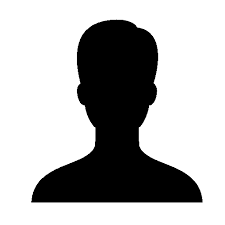Khartoum Contemporary Art Centre (KCAC) is a non-profit conceptual arts initiative. It was founded and run by a small group of artists with a focus on contemporary art and new media. For now, it’s located in Oslo and consists of a gallery, a cafe/bar, workshop and an artist residency. The main goal of KCAC is to motivate and develop discursive projects that stem from Africa and the Middle East; this aims at bridging the gap between these regions and the rest of the globe- a role that Khartoum has always had throughout history.
KCAC also wishes to garner a new understanding of arts in Africa and the Middle East in relation to all aspects of our present lives and cultures. It aims to bring together art practitioners from different generations and to nurture them with the quality of art making, specifically in Sudan. KCAC would like to help Sudanese artists get in touch with their peers in neighboring countries and to establish an institution where free thinking is encouraged. It also aims at promoting Sudanese contemporary arts and artists to the rest of the world and assisting them in showing their work in international platforms and arts gatherings. KCAC seeks to foster a critical way of thinking about art and help plant a movement of artists and art critics to affect art making in the region.
The art residency will be open to artists from all over the world to interact with local artists and research this relatively unknown part of the world. With the aim of developing collaborations between Sudan and the international art scene, KCAC will manage programs, exhibitions, conferences and film screenings. KCAC will offer a platform for all artists to learn, think, show or talk about contemporary art. In this interview, we learn about the idea behind the creation of KCAC from the founder himself, Mohammad Fadlabi.

Ibrahim Algrefwi: Congratulations, the Khartoum Center for Contemporary Art (KCAC) is an ambitious project. Tell us about the idea and concept of the center.
Mohammed Fadlabi: The Middle East is a dynamic and shifting region, molded by changing historical, social and political realities. And so is Africa. It’s not a geographical entity. One could ask: is there any shared history or future that could unite Africans other than their colonial history? Do those who were displaced because of slavery still belong to Africa? Is Africa a real place or is it just a goal, a utopia of some sort.
The investigation of the histories and arts of those regions is actually an investigation of the arts and histories of the world.
Khartoum Contemporary Art Centre (KCAC) is a non-profit conceptual arts initiative founded by Karin Erixon and myself with a focus on contemporary art and new media. The Center was meant to be located in Khartoum, a city that was always a meeting point between Africa and the Middle East since the era of the Ottoman Empire in 1821. The city with its African roots in the kingdom of Nubia and Kush and its Arabic and Islamic cultures was always a fertile soil for identity crises and political conflicts and influences from both Pan Arabs and Pan Africanists simultaneously. It’s a bridge between the two and a border at the same time; a wall that separates them and a window for both to look into each other.
For now, our center is based in Oslo at Bernt Ankers gt 17. It is a cultural center in exile, waiting for democracy and working to make it happen.
IG: What are the kinds of projects that the center plans to host and sponsor?
MF: The main goal of KCAC is to motivate and develop discursive projects that stem from Africa and the Middle East, bridging the gap between them and the rest of the globe. KCAC garners a new understanding for arts in Africa and the Middle East in relation to all aspects of our present life and cultures.
The center aims to help Sudanese artists get in touch with their peers in neighboring countries, help African artists learn more about the arts in the Middle East and vice versa. It is a platform for the arts from both regions, in Oslo.
IG: How can KCAC create cooperation between artists in Khartoum and the center in Oslo?
MF: The center is based in Oslo, with that it’s only natural to present artists who are based in Oslo, but it’s very important to mention that the center plays the historical role of Khartoum being the bridge between Africa and the Middle East. That doesn’t mean we have to necessarily show artists from Khartoum, but artists who would naturally be shown in Khartoum. As I said, it’s a center in exile; we deal with it as if it’s the heart of Khartoum.
IG: In Khartoum, thinking of building an Art museum is considered some sort of luxury. Are you thinking of registering the Center in Khartoum?
MF: One day, when I can guarantee my artists will face no censorship at all, no matter what they choose to show, I will move the Center to Khartoum.
IG: How can we get connected with KCAC?
MF: Our exiled art Center depends very much on our website to communicate with our audiences in Sudan, Africa and the Middle East. The website will be launched in June 2017 when our doors are open to the public.
To learn more about Fadlabi visit his website and stay tuned for the launch of KCAC in June 2017.
